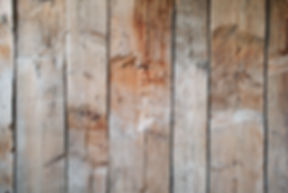The 3 colors in Labrador Retrievers and how they come to be
- Halle Wasson
- May 7, 2021
- 3 min read
Updated: Aug 30, 2021
Labrador retrievers come in three different colors: black, yellow, and chocolate. According to the Labrador Retriever Club, the breed standard states that “The Labrador Retriever coat colors are black, yellow and chocolate. Any other color or a combination of colors is a disqualification. A small white spot on the chest is permissible, but not desirable. White hairs from aging or scarring are not to be misinterpreted as brindling. Blacks are all black. A black with brindle markings or a black with tan markings is a disqualification. Yellows may range in color from fox-red to light cream, with variations in shading on the ears, back, and underparts of the dog. Chocolates can vary in shade from light to dark chocolate. Chocolate with brindle or tan markings is a disqualification” (LRC 17).
The breed standard is clear on what colors are permitted, but do you know how these colors actually come to be?
The black and chocolate colors are a result of the amount of eumelanin pigment found in their coats. The instructions for whether the dog will be black or chocolate are found at the B locus in the dog’s DNA. (Locus is defined as the physical site or location of a specific gene on a chromosome). The B locus is the house of, you guessed it, the “B” genes. The “big” B is the dominant gene, while the “little” b is the recessive gene. The big B gives instructions to make a lot of eumelanin which produces a black coat, while the little b gives instructions to make less eumelanin which produces a chocolate coat.
So… there are three combinations of B genes
BB - which will produce a black dog
Bb - which will produce a black dog
bb - which will produce a chocolate dog
This is because the big B gene will always override the little b gene and create a black coat, so the only way for a chocolate coat is two copies of the little b gene. But, it doesn’t stop there; we still have to go over how the yellow coat is produced. This is where things get a bit more complicated.
The instructions for creating a yellow coat are located at the E locus where the “E” genes are located, and like the B genes, there are two variations of the E gene, the big E and the little e. The big E is the dominant gene and does not interfere with the B genes at all, but when there are two copies of the little e, it can mask the B genes that would otherwise create black or chocolate coats.
So… there are three combinations of the E genes
EE - two copies of the dominant gene
ee - two copies of the masking gene
Ee - and one of each
Out of the three combinations, however, only the middle combination (ee) can mask the chocolate or black pigment and create a yellow coat.
So now you can combine all of the B and E genes together to create nine different variations
EEBB black, not carrying the chocolate gene
EEBb black, carrying the chocolate gene
EEbb chocolate, carrying two copies of the recessive "b" gene
EeBB black, carrying the yellow gene
EeBb black, carrying the yellow and chocolate gene
Eebb chocolate, carrying the yellow gene
eeBB yellow, not carrying chocolate
eeBb yellow, carrying chocolate
eebb yellow, with chocolate pigment (disqualification)
Breeding different color combinations
Now that you understand the different variations of genes and how they produce different coat colors, you can learn how to predict the coat colors of litters. This table from vetdnacenter.com is an awesome tool to show how the combination of genes from each parent will result in different gene combinations throughout the litter.


